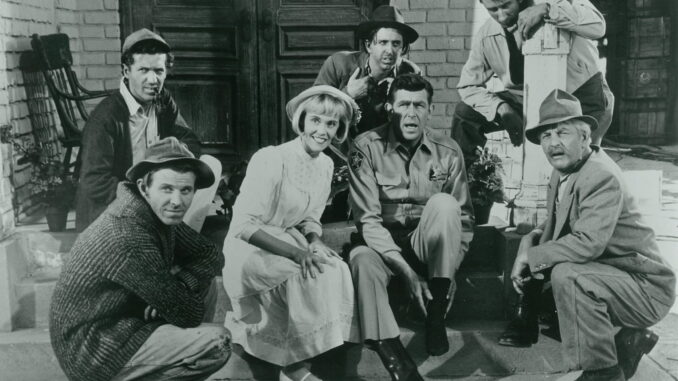
There are certain melodies that drift not from an instrument, but from the very fabric of existence, shaping our perception of reality. Two such resonant chords, seemingly disparate yet profoundly illustrative, are "Fiddles in the Fog" and "Mayberry Madness." One evokes a haunting, introspective beauty, a whisper from the liminal spaces between worlds; the other, a sun-drenched, outwardly serene, yet subtly unhinged portrait of human foible. Together, they form a peculiar symphony, revealing the depths of our inner lives and the delightful absurdities of our communal ones.
"Fiddles in the Fog" is not a physical landscape but a state of being, a sensory poem whispered by damp air and ancient wood. Imagine a lone figure, perched on a craggy outcrop overlooking a valley swallowed by a swirling, opalescent mist. The world beyond is obliterated, reduced to a soft, ethereal gray. Here, sight is useless, and all other senses are heightened. The scent of wet earth and distant pine needles clings to the air; the chill seeps into the bones. And then, from the heart of this veiled oblivion, a fiddle begins to sing. Its notes are not sharp or clear, but softened by the atmospheric dampness, echoing with a mournful, haunting beauty. Each drawn bow is a sigh, each trembling vibrato a tear.
This is the music of memory, of loss, of the forgotten paths and the faces that have faded like old photographs. It speaks to the ancestral ache, the collective unconscious, to everything that is indistinct and yet profoundly felt. The fog serves as a magnificent metaphor for the unknowable, the past that shapes us but remains just out of reach, the future we cannot yet perceive. The fiddle, in turn, is the resilient spirit, the voice of endurance, the art that persists even when clarity is lost. It is the human soul, stripped bare of external distractions, communing with the profound quietude of uncertainty. In the fog, the fiddle doesn’t just play; it is the sound of introspection, a solitary lament and a defiant celebration of being. It reminds us that sometimes, the most profound truths emerge when the world outside grows dim.
In stark contrast to this introspective, melancholic beauty, stands "Mayberry Madness." Step out of the fog and into the blindingly cheerful sunshine of a quintessential American small town. Picket fences stand at attention, the courthouse clock ticks with an almost aggressive punctuality, and the air hums with the comfortable drone of routine. On the surface, Mayberry is the apotheosis of rural idyll: simple, wholesome, safe. Andy Griffith's genial wisdom anchors the town, and Opie's innocent charm tugs at the heartstrings. But beneath the surface, a delightful, subtle madness simmers.
This isn't the madness of chaos or violence, but the endearing, often hilarious, madness of human nature distilled and concentrated. It’s Barney Fife’s hyper-vigilant insecurity, his comically inflated sense of authority barely contained by Andy’s patient good humor. It’s Otis Campbell’s predictable, jovial dipsomania, handled with a folksy tolerance that would be scandalous anywhere else. It’s Ernest T. Bass’s rock-throwing exuberance, Floyd the Barber’s meandering anecdotes, Gomer Pyle’s wide-eyed earnestness. The "madness" of Mayberry is the collective neurosis of a community so committed to its own quaintness that it becomes a parody of itself. Everyone has their assigned role, their predictable quirk, and the town thrives on the gentle friction created by these eccentricities. It's the delightful absurdity of a world where the biggest crisis might be a mislaid fishing pole or a poorly baked pie, yet these events are treated with the gravitas of international incidents. Mayberry Madness illustrates how our attempts at perfect order inevitably reveal the messy, wonderful, and often hysterical truths of our shared humanity.
While Fiddles in the Fog draws us inward, to the swirling mists of introspection and the echoes of the soul, Mayberry Madness pulls us outward, into the bright, sometimes blinding, light of community and its charming imperfections. One speaks of the universal, the timeless, the internal landscape; the other of the specific, the contemporary, the external performance of life. Yet, they are not entirely disconnected. Perhaps the fiddler in the fog, after a long session of plaintive lament, eventually longs for the mundane, comforting chaos of Mayberry. And perhaps, even in the sunniest Mayberry, there are moments when a resident, standing alone in a sudden patch of mist, hears an echo of that solitary fiddle, reminding them of deeper currents beneath the surface of their perfectly ordered lives.
Ultimately, both "Fiddles in the Fog" and "Mayberry Madness" are lenses through which we examine existence. The former reminds us of the profound, the ineffable, the beauty found in uncertainty and the enduring power of art to speak to the soul. The latter celebrates the resilience of humor, the intricate dance of community, and the comforting, often comical, predictability of our human flaws. We are, in essence, both the fiddler lost in the mists of our own thoughts and the bewildered, yet delighted, resident of Mayberry, navigating the endearing lunacy of our shared world. The art of living lies in recognizing that both landscapes are essential, for it is in the interplay between the ethereal and the absurd, the introspective whisper and the communal shout, that the full symphony of life truly unfolds.
